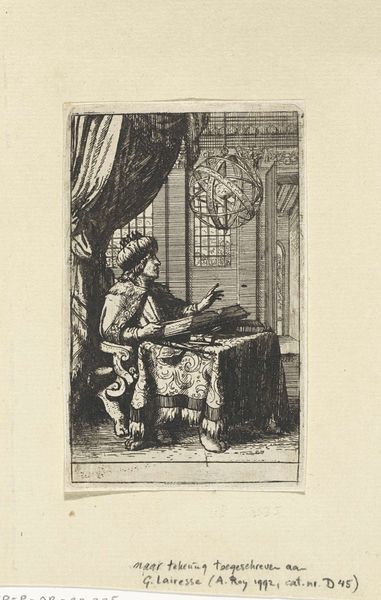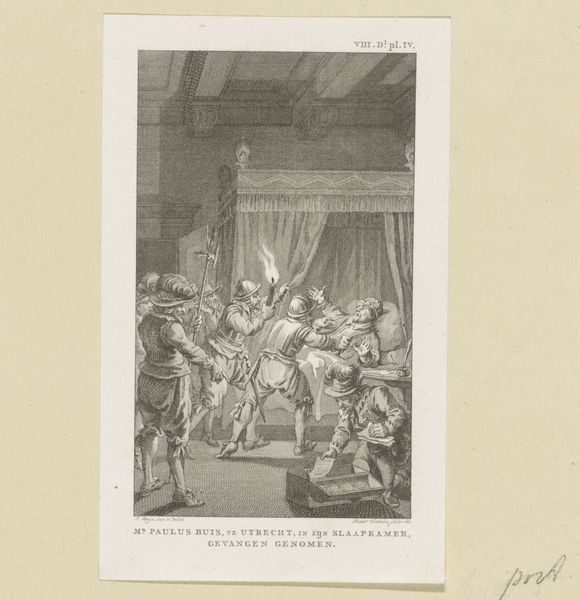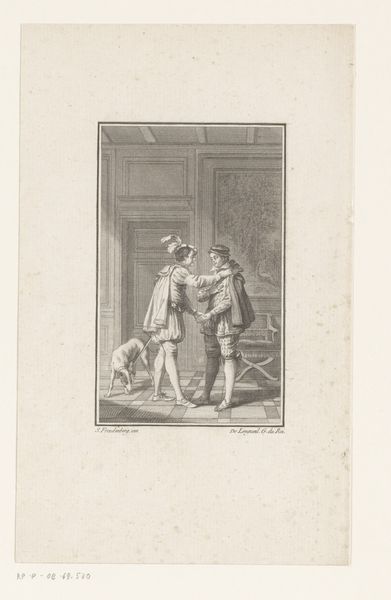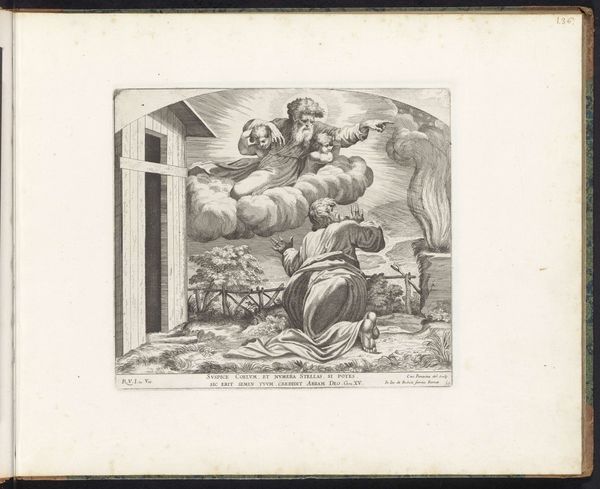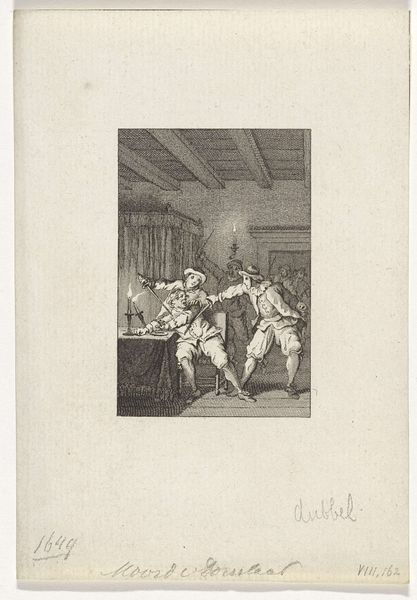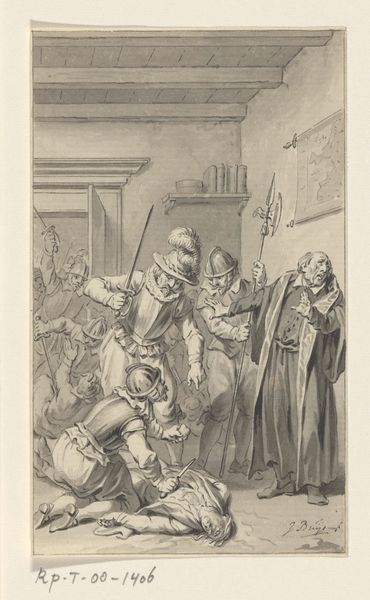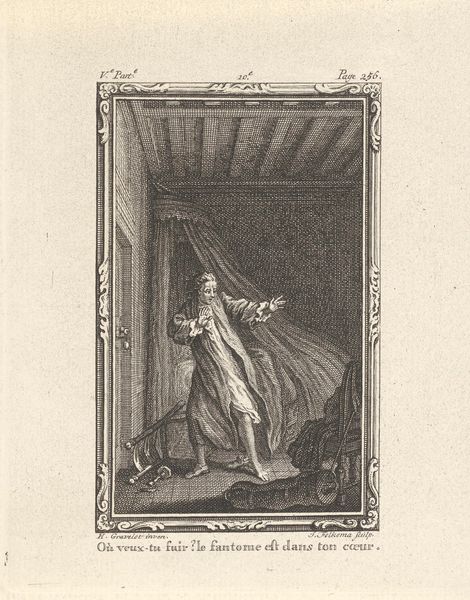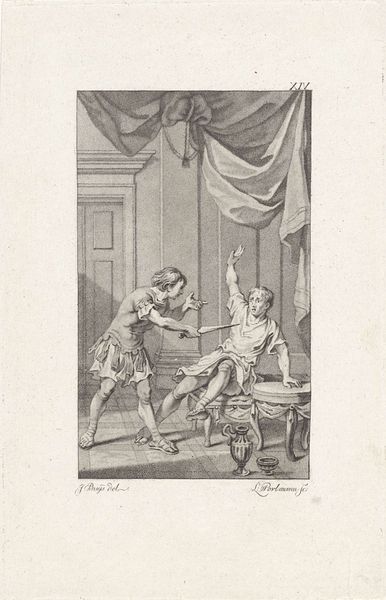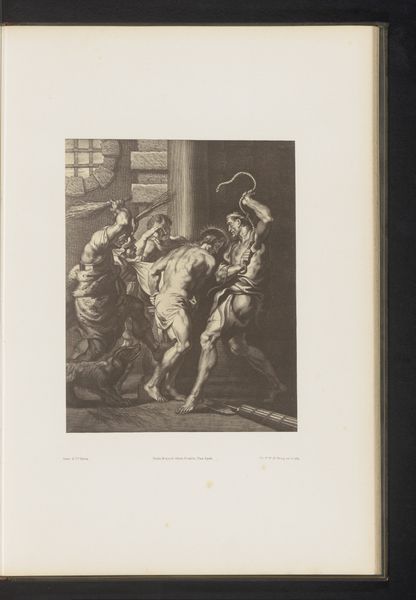
print, engraving
#
narrative-art
#
baroque
# print
#
figuration
#
history-painting
#
engraving
Dimensions: height 188 mm, width 144 mm
Copyright: Rijks Museum: Open Domain
Curator: Looking at this engraving, one immediately feels the weight of tradition, the very careful lines breathing life into what might otherwise be just another historical scene. Editor: The visual language really screams Baroque. I find it oppressive. All the grandeur and that heavy drape convey this…suffocating power dynamic. It begs the question of how these narratives served dominant ideologies of the time. Curator: Precisely. "Koning David in een tempel," or "King David in a Temple," made by Jan Punt in 1743. This print offers a glimpse into 18th-century Dutch interpretations of biblical narratives. Observe the visual symbols— the crown, the scepter, and of course, the temple itself. Editor: Those putti playing musical instruments! They evoke not just celebration but the very essence of divine right. What about that almost forgotten figure hunched at David's feet? Who might that marginalized figure represent, I wonder? Are they perhaps the war's dispossessed or just someone seeking David's mercy? Curator: That is such a contemporary lens. We see the visual cues common in depictions of royalty and faith, all presented in very linear patterns. But thinking intersectionally, how do you read its relationship to gender and power here? Is this merely pageantry or something more complex? Editor: It’s absolutely performative power. David is staged, carefully posed to assert his authority under that dramatic burst of divine light. Yet, the almost theatrical setting does makes you consider the construction of power—who benefits and who is rendered invisible? Curator: Considering that the print employs engraving techniques, the layering, depth, and shading achieved offer a rich reading of light as divine approval, of sorts. That symbolism would definitely resonate with 18th-century audiences, even those questioning traditional power structures. Editor: And seeing it today, understanding the legacy and application of biblical themes to shape narratives is so powerful, so useful. Thanks, Curator, for sharing this! Curator: And thank you for contextualizing the politics that have been, and can still be read from visual symbols. A worthwhile addition!
Comments
No comments
Be the first to comment and join the conversation on the ultimate creative platform.

